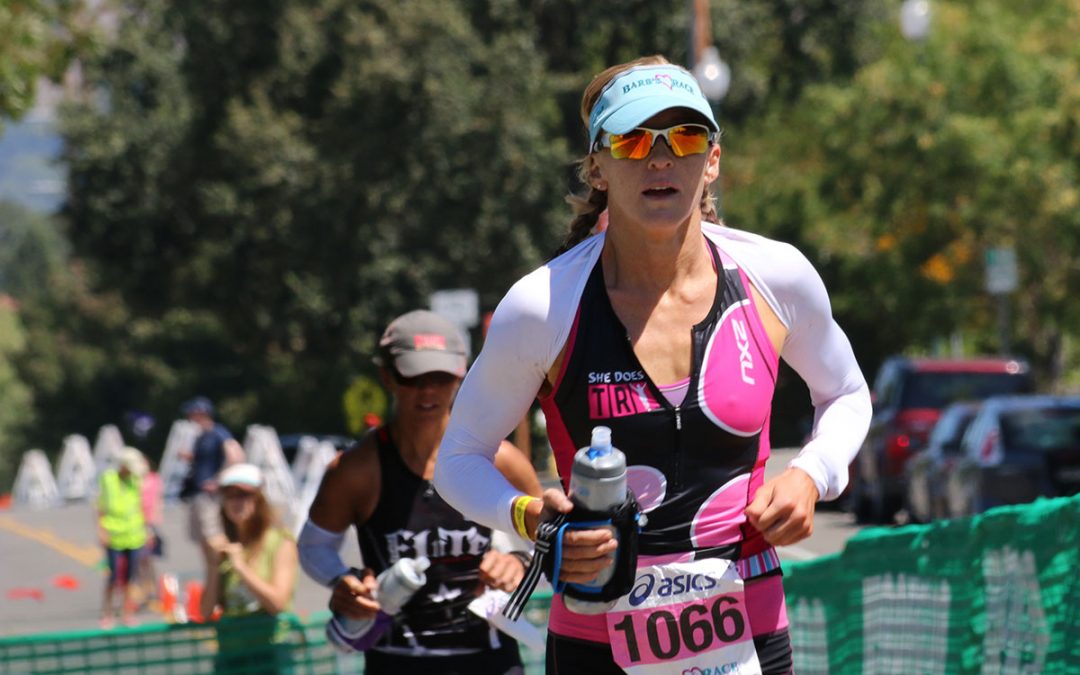Racing a triathlon this season? Here are some odd tips for improving for your next race.
Trust the Feet in Front of You (or Not)
It’s risky, but one way to save energy and increase your average speed during the swim is to find a pair of feet, stick on them like glue, keep your head down and sight less often. Choose a triathlete slightly faster than you, ideally either someone you know or someone who appears to be a steady swimmer. You can always pick up a pair of feet as a swimmer passes you at a slightly faster speed. You can save a lot of energy by drafting and not sighting often, though this of course comes with an obvious risk—being led off course or missing a turn buoy.
Handling Your Bike Over Rough Surfaces
For speed bumps or speed bump like obstacles, lift your butt one inch off the saddle a split second before your front wheel hits the bump. This improves your handling by keeping your rear wheel planted on the ground as it goes over the bump.
For cracks and potholes that, spotted at the last second and cannot be avoided, go straight over them with both hands firmly on the bars, but not in a white-knuckled death grip. Going straight, instead of trying to swerve last second, will help you avoid crashing. Keeping a firm but relaxed grip helps your upper body from being too rigid or overcorrecting after rolling over the object.
Peeing While on the Bike
Assuming you don’t have ready access to a portable toilet, find a false flat downhill, a full-on fast downhill, or at least a flat and fast section to stand up out of the saddle and pee while coasting. Holding your bladder for a long time causes your heart rate to increase and your power to drop from discomfort, and it also deters you from drinking enough. An added bonus of relieving yourself on a hot race day is the cooling effect that comes with it. Keep in mind that you may be penalized if observed by a referee.
Lower Your Cadence to Lower Your Heart Rate
Out of the water and onto the bike, some triathletes struggle with a spiked heart rate and rapid breathing (hyperventilation).
One option is to ease into the bike leg by starting out moderately. However, for short to mid distance races, you may not be able to afford going easy for five or 10 minutes. One trick to calm your system down, while still producing power, is to drop your cadence to around 70-80 for the first five to 10 minutes. This lower your heart rate and calms your breathing. Make sure to increase your cadence later on so you don’t wear your quads out.
Ice in Your Groin (and/or Bra)
Heat is a major obstacle for athletes to battle during the run, regardless of temperature. Even at 60° F, your body is having to put a lot of energy into cooling—energy that could otherwise be put into increasing your pace.
One of the best ways to shed heat on the run is to cool down areas of the body that get a lot of blood flow, like the head, throat and groin. Shove ice down your shorts the next chance you get in a race. The cold may be uncomfortable and the ice usually falls out after a few minutes, but the benefits are worth it. Women can put ice in their bra as well as the groin area for added cooling.
Forgo Sunscreen on Your Upper Face
Too much sunscreen on your forehead or around your eyes can cause painful burning once you start sweating. During the swim, sunscreen around your eyes can hinder the suction of your goggles, causing water to leak in. If you suffer from any type of sunscreen/sweat burn, don’t put sunscreen on your forehead or near your eyes. Wearing swim cap, sunglasses, helmet and hat will protect this area of your face from the sun.
Good luck!
David
P.S. Need a purposeful training plan that takes the guesswork out of your training and gives you structure to reduce risk of overtraining and injury? Check out our training plans for triathlons from sprint to IRONMAN® and running races from 5k to marathon.
—
 Coach David Glover, MS, CSCS has completed 28 IRONMAN distance triathlons, which includes two sub 9 hour finishes and winning Vineman Full twice. Now, David’s passion now is helping triathlete and other endurance athletes achieve their dreams through his online triathlon education and training company, ENDURANCEWORKS. David has an MS in Exercise Physiology and is certified as a coach by IRONMAN Triathlon, USA Triathlon and USA Cycling plus has his CSCS from NSCA. After six years of living, training and coaching in the triathlon mecca of Boulder, CO, David currently resides in Southern California.
Coach David Glover, MS, CSCS has completed 28 IRONMAN distance triathlons, which includes two sub 9 hour finishes and winning Vineman Full twice. Now, David’s passion now is helping triathlete and other endurance athletes achieve their dreams through his online triathlon education and training company, ENDURANCEWORKS. David has an MS in Exercise Physiology and is certified as a coach by IRONMAN Triathlon, USA Triathlon and USA Cycling plus has his CSCS from NSCA. After six years of living, training and coaching in the triathlon mecca of Boulder, CO, David currently resides in Southern California.


